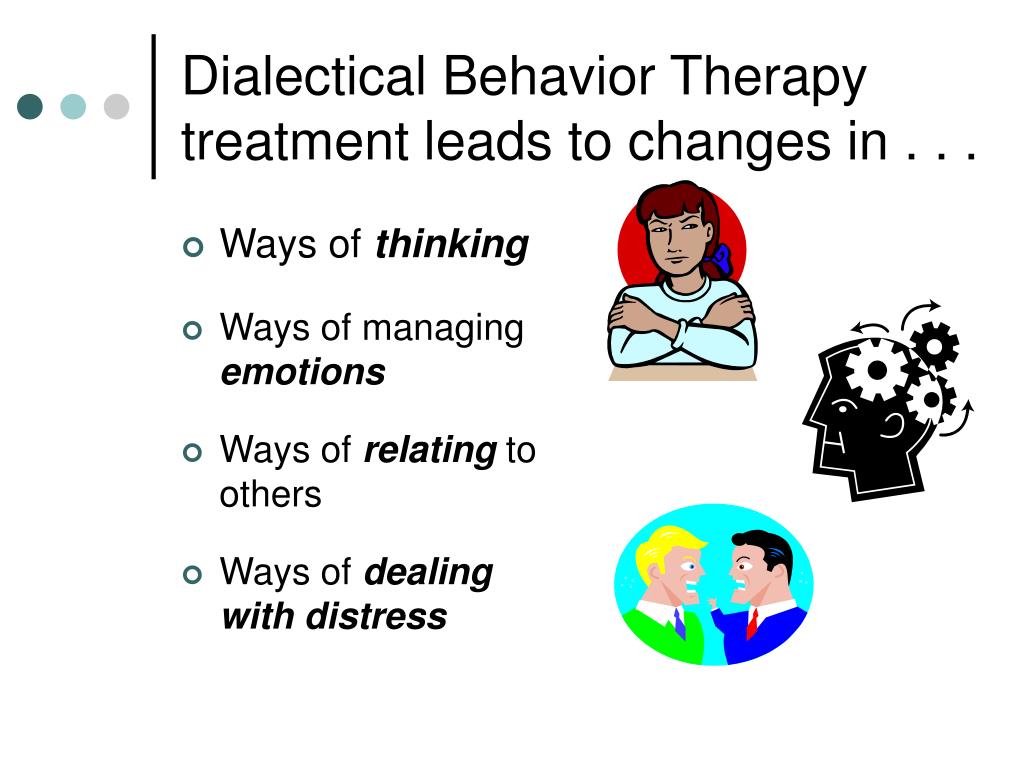

Distress Tolerance: how to tolerate pain in difficult situations, not change it.


1) Enhance Motivation with Individual Therapy – DBT individual therapy is focused on enhancing client motivation and helping clients to apply the skills to specific challenges and events in their lives. Clients are able to understand their problem behaviors and learn how to manage situations more effectively, while the therapist maintains a posture grounded in compassionate assumptions about clients.Individual psychotherapy is a mode that serves two functions within DBT. Techniques for achieving change are balanced by techniques of acceptance problem solving is rooted in validation confrontation is blended with understanding. The techniques also are underpinned by a philosophy that recommends a balanced, flexible and systematic approach. The techniques used in DBT are extensive and varied, addressing essentially every aspect of therapy. Individual therapy is structured in stages, and a hierarchy of targets is defined at each stage. In addition to client groups, DBT principles and skills (specifically the Middle Path and Interpersonal Effectiveness skills) are taught in a multifamily group format each week. The group therapy modules include skills training in: Coaching is done throughout the entire treatment process to help clients apply what they learn to daily, real-world situations.

The treatment is comprised of coaching and therapist consultation, as well as individual and group therapy. The treatment itself is founded in a bio-social theory: that certain severe emotional disorders are a consequence of the biology of an emotionally vulnerable individual transacting with certain social or environmental circumstances that are “invalidating.” We’re also pleased to serve as a model for other treatment programs looking to employ the practices of DBT for their adolescent clients. Studies now demonstrate DBT’s effectiveness for treating youth with dual-diagnosis (mental health and substance abuse) needs. While it has been successful in treating adults, The Center was a pioneer in developing DBT therapy specifically for adolescents. Research findings suggest that DBT is successful in reducing acting-out behavior, self-injury, and inpatient treatment time. Dialectical Behavior Therapy (DBT) is an innovative treatment method developed specifically to treat challenging clients in a way that preserves the morale of the therapist and the client.


 0 kommentar(er)
0 kommentar(er)
